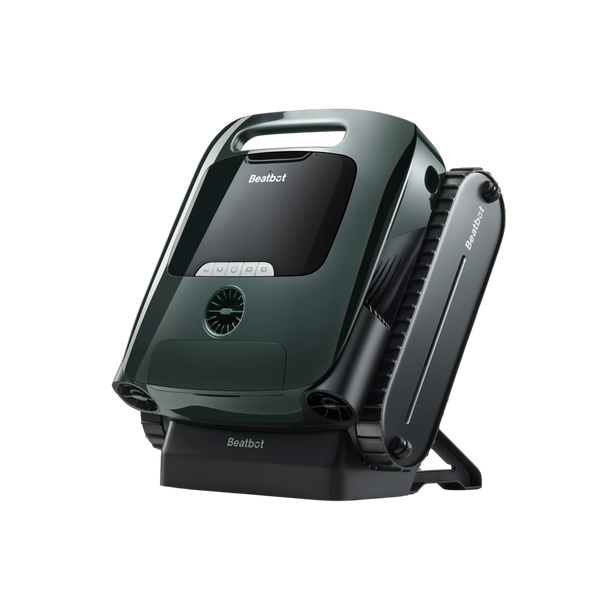Reducing Chlorine Levels in Pools: Methods, Safety, and Effectiveness
Chlorine is best known for keeping pools clean, but here's the thing: getting the levels wrong can mess with water quality, swimmer health, and even the life of your pool gear. So let's dive into how to keep your pool's chlorine levels balanced and why pH matters.
Table of content

The Big Deal About Balancing pH
Your pool's pH is like its personality—it tells you if the water is too acidic or too alkaline. A pH between 7.2 and 7.8 is just right for keeping the water safe and comfortable. It boosts the power of your disinfectant, prevents equipment from rusting, and stops scale buildup. Plus, it keeps swimmers feeling fresh, not irritated.
How pH Affects Your Pool's Germ-Killing Power
pH matters because it can tone down or ramp up the effectiveness of chlorine. If your pool's pH is too high, chlorine becomes less active. Too low, and chlorine evaporates quickly.
pH and Swimmer Health
Our bodies are pretty sensitive to water's pH. Water that's off the mark can cause skin and eye irritation, or even allergies. Nobody wants to leave the pool with red, itchy skin, right?
pH Imbalance Speeds Up Bacteria Growth
When pH is out of whack, it can give bacteria and microorganisms a boost, compromising your pool's water quality.
Shorter Pool Lifespan Due to pH Imbalance
An off-kilter pH can also make your pool's chemicals corrode its structure and equipment, which isn't good for its looks or lifespan, and it can hike up maintenance costs.
Methods to Reduce Chlorine Levels

- Activated Carbon: Nature's Filter If you're looking for a simple, safe solution, activated carbon filters are the way to go! They soak up chlorine and other impurities. But remember, natural solutions might take longer to work than chemical neutralizers, so be patient.
- Partial Draining and Water Replacement When your pool's chlorine levels are too high, you can lower them by partially draining and topping up with fresh water. This method is straightforward and effective, but you'll need to base the amount you drain on your chlorine concentration test results.
- Harnessing Sun and Wind UV rays and wind can naturally reduce chlorine levels. Sunlight breaks down chlorine molecules, and wind speeds up evaporation, which helps chlorine dissipate over time.
Safety Measures
Chemical Handling
When dealing with pool chemicals, always wear the right protective gear, like gloves and goggles, to avoid dangerous reactions from mixing different chemicals.
Electrical Safety
Make sure all electrical equipment is installed and maintained by professionals, use Ground Fault Circuit Interrupters (GFCI), and regularly check for any damage or wear on wires and equipment. You might also consider high-tech pool cleaning products to help with chemical balancing, like the Beatbot iSkim Ultra robotic pool skimmer, which uses safe and efficient solar power for long-lasting performance in pre-cleaning the water's surface before work.
Anti-slip Measures
It's recommended to install anti-slip surfaces around the pool, like textured tiles or rubber mats, to reduce the risk of slips and falls.
Water Quality Testing
Water quality testing is key to pool management. Every pool needs a testing tool to measure various indicators and determine the water's quality. Testing tools range from test kits to rapid detectors to online monitors. Regular testing helps ensure the right balance of water and swimming safety, with a recommendation to test the chemical content in the pool at least twice a week during the summer.
Effectiveness
If you're curious about whether the methods to reduce chlorine levels are working, you can measure this by regularly testing the chlorine levels in your pool water. Here are some key points that might affect the effectiveness of pool chlorine level management:
Testing Frequency and Timing
It's recommended to test the chemical content in the pool at least twice a week during the summer season, and at least once a week during the off-season. This frequency helps ensure the proper balance of water and swimming safety. Increasing the frequency of testing is necessary in certain situations, like when the pool is used frequently, after rainfall, or when the water becomes turbid, because chlorine consumption might increase in these cases.
Natural Variations in Chlorine Levels
Research shows that in outdoor swimming pools, the average rate of decline of free chlorine on sunny days is 0.26mg/L every 10 minutes, while at night it's 0.025mg/L every 10 minutes, one-tenth of the daytime rate. So, we recommend applying the disinfectant at night because there's less loss of disinfectant, and the night provides ample time for contact to achieve the disinfection effect.
The Impact of Swimmers
You might be surprised, but swimmers can also artificially affect the levels of free chlorine! Urine, sweat, and other secretions, along with the bacteria they carry, can cause a decrease in free chlorine. Therefore, more frequent testing and adjustment of chlorine levels may be needed after peak traffic periods, like right after a pool party.

FAQ
How long does it take for chlorine levels to drop in a pool?
Generally, it takes about 2 to 3 days for the chlorine levels in a pool to drop, but it really depends on things like how much chlorine you start with, the weather, and how often people use the pool. For instance, sunlight and heat can speed up the process, while an imbalanced pH can slow it down.
Will chlorine levels go down on their own?
Chlorine levels do indeed decrease naturally over time with sunlight, rain, and evaporation. Plus, as chlorine does its job of killing bacteria and other microorganisms, it gets used up and breaks down, which also reduces the chlorine levels.
Relative Blogs
About the author



















